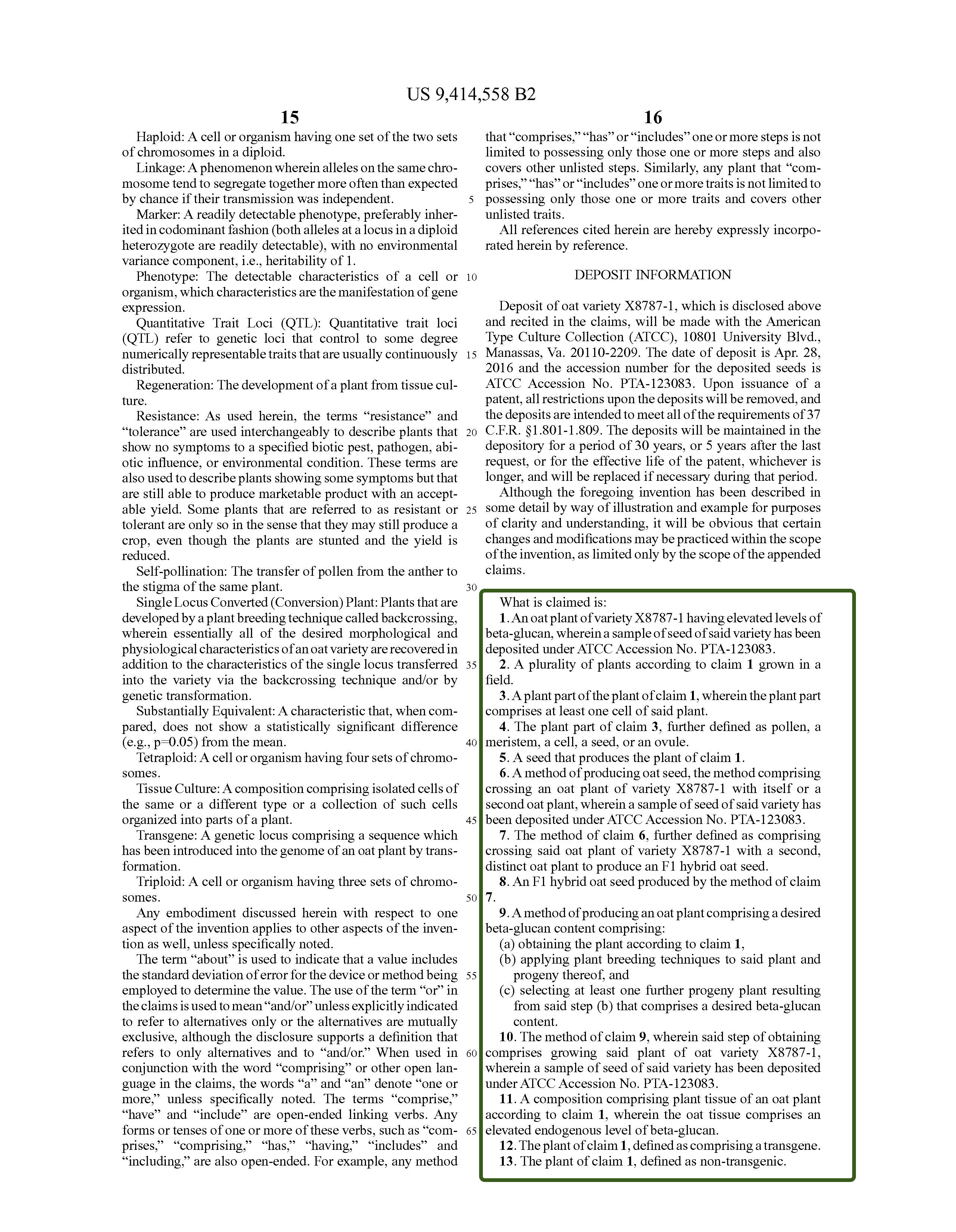
The second part of the specification section contains the patent claims. This section is sometimes difficult to find in the original patent document, as it continues directly from the specification and is not set off by a new heading. The claims section begins with a phrase such as “what is claimed is” and enumerates the scope of the patent protection in minute, legalistic detail.
Claims are the most important part of the patent in terms of rights afforded to the patent holder. Claims set the scope of the patent protection. Potential infringement is evaluated in light of whether an invention has all the elements of a single claim or if it has overall similarity to the description in the claims.
Most claims sections contain a mix of independent and dependent claims. This distinction between types of claims provides applicants the ability to further elaborate on specific claims without needing to restate in detail.
For instance, in the oat plant example, claim 1 (an independent claim) introduces a very specific idea:
- An oat plant of variety X8787-1 having elevated levels of beta-glucan, wherein a sample of seed of said variety has been deposited under ATCC Accession No. PTA-123083.
Claim 2 (a dependent claim) assumes all of the qualities of claim 1, while further specifying:
- A plurality of plants according to claim 1 grown in a field.
During infringement cases, dependent claims are evaluated in light of their corresponding independent claims; the independent claim must be infringed upon for the dependent claim to be infringed upon (i.e., another plant breeder growing any plurality of plants in a field would not necessarily infringe on this patent; however, that plant breeder growing a plurality of variety X8787 oat plants with elevated levels of beta-glucan grown in a field might be infringing).
In the case of plant technologies, claims may protect multiple things associated with the plant. In the case of the oat plant patent example, the claims protect the variety of oat plant (introduced in claim 1), the seed that produces the plant (introduced in claim 5), the method of producing the seed (introduced in claim 6), and the method of producing a commodity plant product (introduced in claim 17), as well as various qualities associated with each of these.

